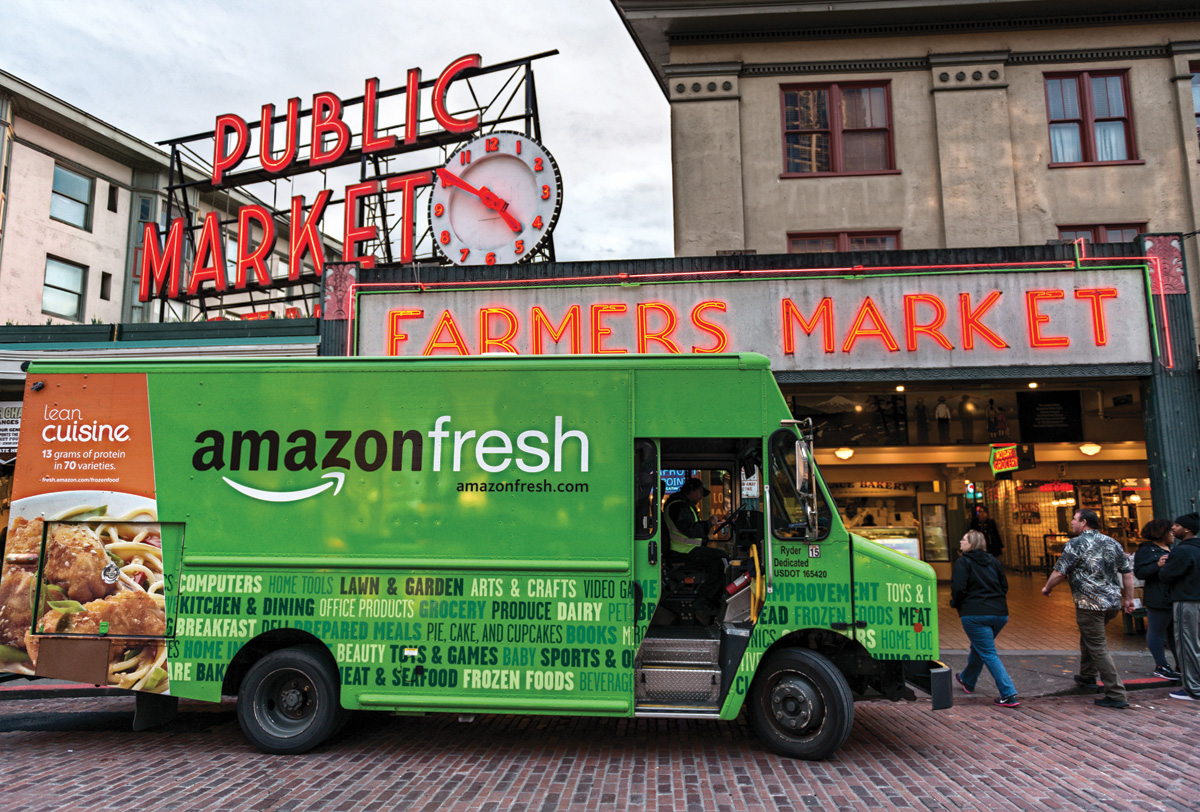Amazon has altered the way consumers spend their hard-earned money and the way business owners operate. Their power lies in the data collected and how they put what they’ve learned to work. Amazon represents the present and the future of American business. Why hasn’t the restaurant industry learned from the power of Amazon? It’s time for us as leaders in the massive (and dynamic) hospitality industry to adopt their data-driven approach to sentiment and consumer behavior to transform our delivery of food & beverage, service and experience.
Amazon tracks each customer’s orders, preferences, search habits, etc. and uses this information to its advantage to sell more and to enhance the user experience to increase customer engagement, offer the best possible service and constantly find ways to improve it. Many consumers have changed the way they shop and procure things from household cleaning products to children’s toys and retailers have had to adapt accordingly.
The restaurant industry has its own unique business model that differs from retail, which has led to many operators rejecting consumer-facing technology. We’ve also been contending with shrinking margins leading to slow adoption of new technologies. This has essentially led to the industry “saving” a few pennies on the way to obsolescence. Restaurant operators must take a page from how Amazon approaches business if we’re to survive.
The good news is that we’re not in a gloom & doom scenario. Data collected through technology can and will be the salvation for the industry. Jason Ridout, chief commercial officer of Jamie Oliver Restaurant Group, aptly said, “There’s nothing more important than listening to customers—but without big data you simply don’t have that level and depth of information.”
It’s simple: The better you know your customer, the better you can serve them. We have the ability now to tap into guests likes and dislikes with the power of technology.
To keep the good news coming, today’s consumer is increasingly accustomed to digital innovation, so there should be less reticence about adoption. Take, for example, that millennials, the generation practically born with cell phone in-hand, are the most likely age group to eat at restaurants instead of at home, according to analysts at Bernstein. Baby boomers are also “using computers and smartphones when interacting with restaurants,” according to National Restaurant Association research. A little more than half of consumers age 45–64 have recently used technology options when dining out.
This effectively counters the concern that technology might hinder the foundation of hospitality—human interaction—but that’s because we’ve rarely cracked how to leverage tech in an unobtrusive way. Consider how subtly e-commerce sites prompt for feedback on an experience following a purchase. Hospitality is about understanding a consumer’s needs and then exceeding their expectations, so we must better understand consumer sentiment about what we do. Hospitality technology must invite consumers to share with us on their own terms but in real time.
Yumpingo operator partner Bill’s was able to use technology to pinpoint an issue with one specific menu item. Based on poor ratings collected through a one-minute guest survey following a meal, Bill’s management identified that the equipment used to make this specific dish needed recalibrating in order to produce the dish the way it was intended. After making the change, Bill’s management watched the scores for this dish improve through the platform’s real time following. Imagine if they hadn’t been able to access guest feedback. The restaurant may have never known there was an issue, and they certainly would not have been able to fix it.
Gone are the days where restaurants must operate on “gut feel” and fascinate solely on sales, costs and margins because they’re calculable on P&L spreadsheets. Additionally, consumer sentiment to date has been limited to the extremes—love it or hate it—on unreliable review websites. The end result has been that intangible and unsubstantiated assessments have determined menu options, daypart programming, training programs, LTOs, scheduling, and more when we know that sentiment is what impacts our future. Good sentiment will deliver traffic organically rather than marketing and discounts.
Collecting information in real-time allows operators to make informed operational decisions. If we could secure Amazon-level digital data on how we’re doing from the consumer’s perspective, we could replace instinct with certainty and confidence over what we must do with our business. Amazon has created the blueprint for us, and now all that’s needed is implementation within the four walls of the restaurant.







